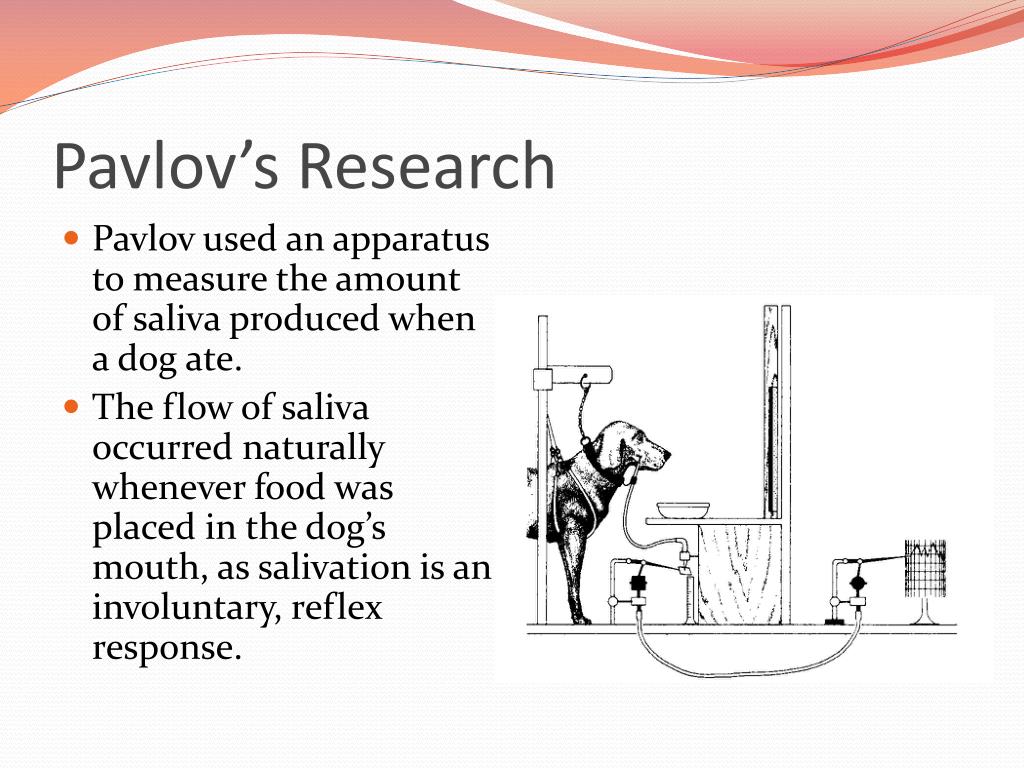

Pavlov effect series#
To explore this phenomenon in an objective manner, Pavlov designed a series of carefully controlled experiments to see which stimuli would cause the dogs to salivate. These unusual responses intrigued Pavlov, and he wondered what accounted for what he called the dogs’ “psychic secretions” (Pavlov, 1927). However, dogs don’t naturally salivate at the sight of an empty bowl or the sound of footsteps. Salivating to food in the mouth is reflexive, so no learning is involved. Over time, Pavlov (1927) observed that the dogs began to salivate not only at the taste of food, but also at the sight of food, at the sight of an empty food bowl, and even at the sound of the laboratory assistants’ footsteps. He then measured the amount of saliva produced in response to various foods.


In his studies with dogs, Pavlov surgically implanted tubes inside dogs’ cheeks to collect saliva. Pavlov’s area of interest was the digestive system (Hunt, 2007). Physiologists study the life processes of organisms, from the molecular level to the level of cells, organ systems, and entire organisms. Pavlov was a physiologist, not a psychologist. Pavlov came to his conclusions about how learning occurs completely by accident. Ivan Pavlov’s research on the digestive system of dogs unexpectedly led to his discovery of the learning process now known as classical conditioning.


 0 kommentar(er)
0 kommentar(er)
